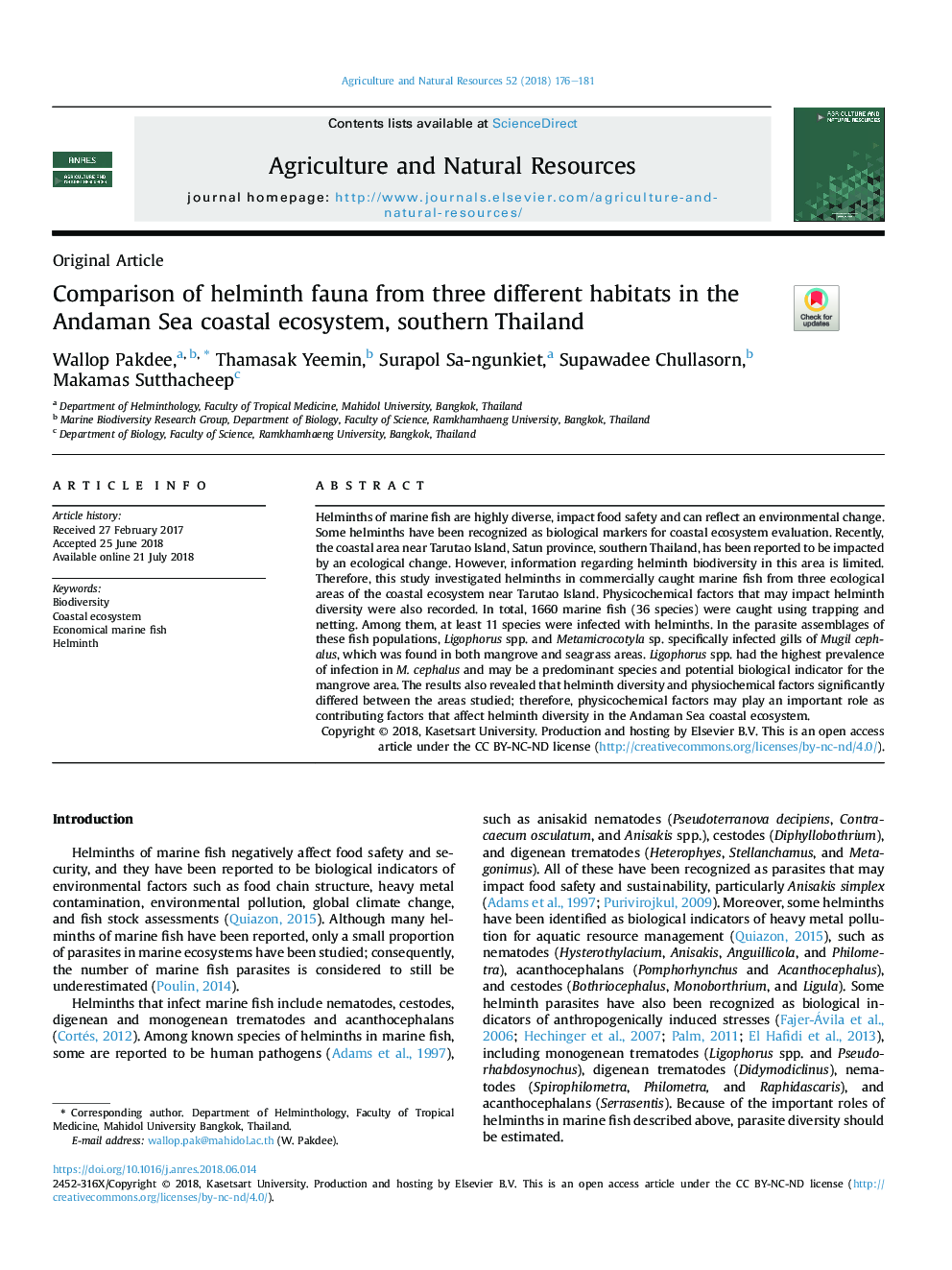| Article ID | Journal | Published Year | Pages | File Type |
|---|---|---|---|---|
| 10224960 | Agriculture and Natural Resources | 2018 | 6 Pages |
Abstract
Helminths of marine fish are highly diverse, impact food safety and can reflect an environmental change. Some helminths have been recognized as biological markers for coastal ecosystem evaluation. Recently, the coastal area near Tarutao Island, Satun province, southern Thailand, has been reported to be impacted by an ecological change. However, information regarding helminth biodiversity in this area is limited. Therefore, this study investigated helminths in commercially caught marine fish from three ecological areas of the coastal ecosystem near Tarutao Island. Physicochemical factors that may impact helminth diversity were also recorded. In total, 1660 marine fish (36 species) were caught using trapping and netting. Among them, at least 11 species were infected with helminths. In the parasite assemblages of these fish populations, Ligophorus spp. and Metamicrocotyla sp. specifically infected gills of Mugil cephalus, which was found in both mangrove and seagrass areas. Ligophorus spp. had the highest prevalence of infection in M. cephalus and may be a predominant species and potential biological indicator for the mangrove area. The results also revealed that helminth diversity and physiochemical factors significantly differed between the areas studied; therefore, physicochemical factors may play an important role as contributing factors that affect helminth diversity in the Andaman Sea coastal ecosystem.
Related Topics
Life Sciences
Agricultural and Biological Sciences
Forestry
Authors
Wallop Pakdee, Thamasak Yeemin, Surapol Sa-ngunkiet, Supawadee Chullasorn, Makamas Sutthacheep,
